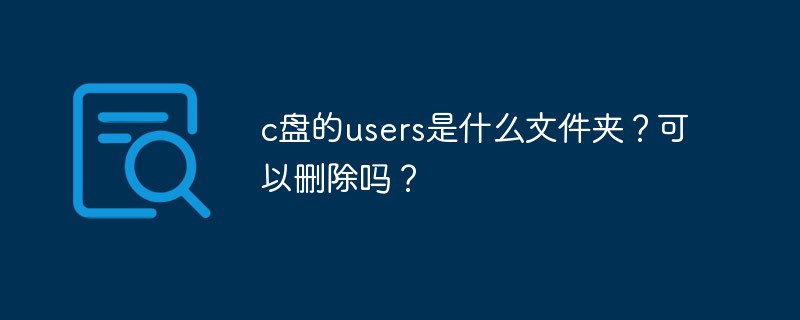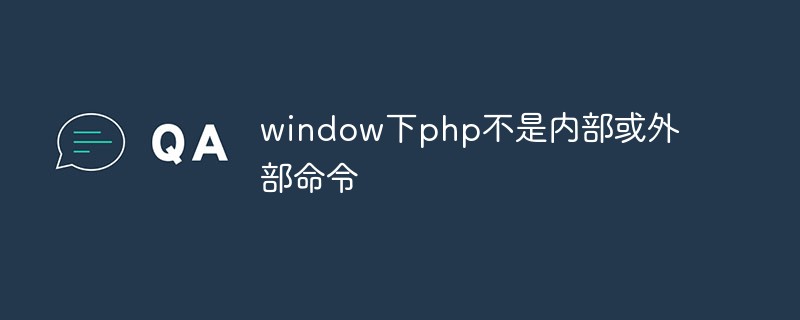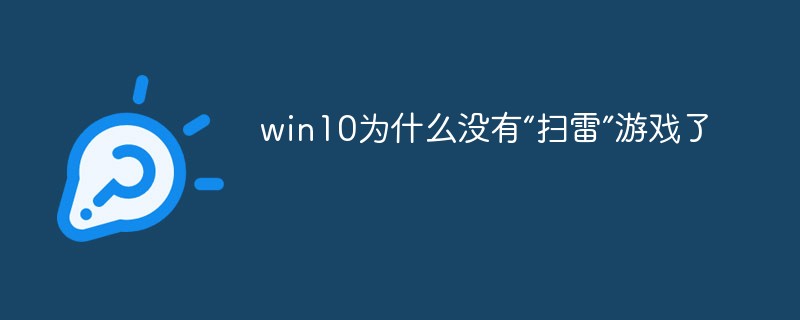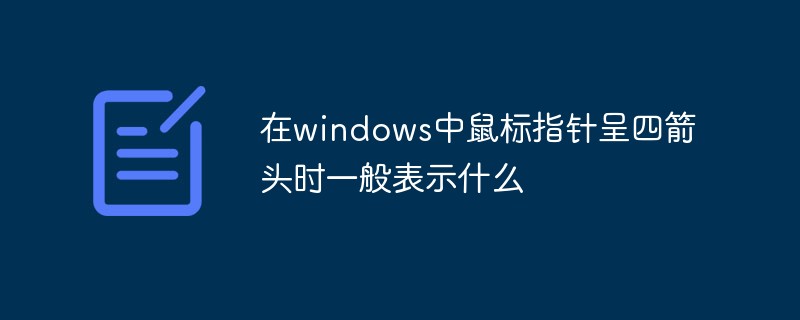 Backend Development
Backend Development Python Tutorial
Python Tutorial Introduction to flask_bootstrap decorating web pages in python (with code)
Introduction to flask_bootstrap decorating web pages in python (with code)This article brings you an introduction to flask_bootstrap decorating web pages in python (with code). It has certain reference value. Friends in need can refer to it. I hope it will be helpful to you.
flask_bootstrap
Bootstrap is an open source framework developed by Twitter that provides user interface components for creating clean and attractive web pages that also Compatible with all modern web browsers.
Bootstrap is a client-side framework, so there is no direct involvement of the server. All the server needs to do is provide an HTML response that references Bootstrap Cascading Style Sheets (CSS) and JavaScript files, and instantiate the required components in the HTML, CSS, and JavaScript code. The ideal place to perform these operations is the template.
Flask-Bootstrap can integrate Bootstrap in the program
Installation:
pip install flask-bootstrap
Use:
from flask_bootstrap import Bootstrap ...... bootstrap = Bootstrap(app)
Inheritance of html files
After initializing Flask-Bootstrap, you can use a base template containing all Bootstrap files in the program. This template uses Jinja2's template inheritance mechanism to allow the program to extend a base template with a basic page structure, which includes elements used to introduce Bootstrap.
bootstrap’s base.html document:
{% block doc -%}
nbsp;html>
{%- block html %}
{%- block head %}
<title>{% block title %}{{title|default}}{% endblock title %}</title>
{%- block metas %}
<meta>
{%- endblock metas %}
{%- block styles %}
<!-- Bootstrap -->
<link>
{%- endblock styles %}
{%- endblock head %}
{% block body -%}
{% block navbar %}
{%- endblock navbar %}
{% block content -%}
{%- endblock content %}
{% block scripts %}
<script></script>
<script></script>
{%- endblock scripts %}
{%- endblock body %}
{%- endblock html %}
{% endblock doc -%}
Inherit the base template of the Bootstrap file and write a base template suitable for your own project.
{#自己编写一个基类模板#}
{% extends 'bootstrap/base.html' %}
{% block styles %}
{{ super() }}
<link>
{% endblock %}
{% block navbar %}
<nav>
<p>
<!-- Brand and toggle get grouped for better mobile display -->
</p>
<p>
<button>
<span>Toggle navigation</span>
<span></span>
<span></span>
<span></span>
</button>
<a></a>
</p>
<!-- Collect the nav links, forms, and other content for toggling -->
<p>
</p>
<ul>
<li><a>首页<span>(current)</span></a></li>
<li><a>新闻</a></li>
<li><a>国际</a></li>
<li><a>国内</a></li>
<li><a>系统信息</a></li>
<li><a>登陆用户</a></li>
</ul>
<ul>
{% if 'user' in session %}
<li><a><span></span>
{{ session.user }}</a></li>
<li><a><span></span>
注销 </a></li>
{% else %}
<li><a><span></span>
登陆</a></li>
{% endif %}
<li><a><span></span>
注册</a></li>
</ul>
<!-- /.navbar-collapse -->
<!-- /.container-fluid -->
</nav>
{% endblock %}
{% block content %}
{#定义属于自己的block#}
{% block newcontent %}
{% endblock %}
{% block footer %}
<p>
宇宙大魔王--ZAJ
</p>
{% endblock %}
{% endblock %}
The extends directive in Jinja2 imports bootstrap/base.html from Flask-Bootstrap to achieve template inheritance. The base template in Flask-Bootstrap provides a web page framework that imports all CSS and JavaScript files in Bootstrap.
The above example redefines three blocks, which are the rewriting of styles, navbar and content of bootstrap/base.html. These blocks are provided by the base template and can be redefined in the derived template.
If the program needs to add new content to a block that already has content, it must use the super() function provided by Jinja2. For example, if you want to add a new CSS file to the derived template, you need to define it like this:
{% block styles %}
{{ super() }}
<link>
{% endblock %}
Enable flask_bootstrap and flask_wtf to write a FLASK project
Requirements:
Realize the home page display, login page display, registration page display, and user exit (logout). And only users existing in the database can log in to the web page. Data interaction is mainly achieved through forms. Currently, for user registration, the database is not returned.
模板文件有templates/base.html , templates/index.html , templates/login.html , templates/register.html Py文件有 zaj_run.py , zaj_ forms.py , zaj_modles.py , zaj_config.py
Template file link
链接:https://pan.baidu.com/s/1Uov-i8b2fZMr9fOe32tcgg 提取码:jrbs
# zaj_run.py
from flask import Flask,render_template,session,redirect,url_for
from flask_bootstrap import Bootstrap
from zaj_forms import LoginForm,RegisterFrom
from zaj_models import isPasswdOk
import functools
app = Flask(__name__)
app.config['SECRET_KEY'] = 'SHEEN'
bootstrap = Bootstrap(app)
def is_login(f):
"""判断用户是否登陆的装饰器"""
@functools.wraps(f)
def wrapper(*args, **kwargs):
# 主函数代码里面, 如果登陆, session加入user, passwd两个key值;
# 主函数代码里面, 如果注销, session删除user, passwd两个key值;
# 如果没有登陆成功, 则跳转到登陆界面
if 'user' not in session:
return redirect('/login/')
# 如果用户是登陆状态, 则访问哪个路由, 就执行哪个路由对应的视图函数;
return f(*args, **kwargs)
return wrapper
@app.route('/')
def index():
return render_template('index.html')
@app.route('/login/',methods=['GET','POST'])
def login():
# session.pop('user',None)
# session.pop('passwd',None)
form = LoginForm()
print(form.data) #{'user': 'root123', 'passwd': 'sheen123', 'submit': True,....}
if form.validate_on_submit():
user = form.data['user']
passwd = form.data['passwd']
if isPasswdOk(user,passwd):
session['user'] = user
session['passwd'] = passwd
return redirect(url_for('index'))
else:
return render_template('login.html',form=form,message='密码或用户名错误')
else:
return render_template('login.html',form=form)
@app.route('/register/',methods=['GET','POST'])
def register():
form = RegisterFrom()
# 如果是post方法并且表单验证通过的话, 返回True;
if form.validate_on_submit():
# 用户提交的表单信息
print(form.data)
return 'ok'
return render_template('register.html', form=form)
@app.route('/logout/')
def logout():
session.pop('user', None)
session.pop('passwd', None)
# 注销即删除用户的session信息, 注销成功, 跳转到首页;
return redirect(url_for('index'))
# return redirect('/')
if __name__ == '__main__':
app.run( port = 8900)
# 报错1:TypeError: __init__() takes from 1 to 2 positional arguments but 3 were given
# 解决:把输入表单LoginForm,RegisterFrom中的Required去掉
# 问题2:每次重新运行程序,都会显示root123用户已登陆,即session里面有数据
# 解决:添加判别session内容的函数is_login()。
# zaj_models.py,存放数据库操作
import pymysql
from zaj_config import DB
# 1. 创建连接
conn = pymysql.connect(
host=DB.HOST,
user = DB.USER,
passwd = DB.PASSWD,
port = DB.PORT,
db = DB.DBNAME,
)
cur = conn.cursor()
def isUserExist(username):
"""判断用户名是否存在"""
sqli = "select * from user where name='%s'" %(username)
res = cur.execute(sqli)
# res返回的是sql语句查询结果的个数;
# 如果为0, 没有查到。
if res == 0:
return False
else:
return True
def isPasswdOk(username, passwd):
sqli = "select * from user where name='%s' and passwd='%s'" %(
username, passwd)
res = cur.execute(sqli)
if res == 0 :
return False
else:
return True
def addUser(username, passwd):
"""用户注册时, 添加信息到数据库中"""
sqli = "insert into user(name, passwd) values('%s', '%s')" %(
username, passwd)
try:
res = cur.execute(sqli)
conn.commit()
except Exception as e:
conn.rollback()
return e
#
# cur.close()
# conn.close()
if __name__ == "__main__":
addUser('root', 'root')
print(isUserExist('root'))
print(isPasswdOk('root', 'root'))
# zaj_forms.py,存放表单操作
from flask_wtf import FlaskForm
# 每个Web表单都由一个继承自FlaskForm的类表示
from wtforms import StringField,PasswordField,SubmitField
# StringField类表示的是属性为type="text"的<input>元素。
# SubmitField类表示的是是属性为type="submit"的<input>元素
#WTForms内建的验证函数validators,而且是以数组形式,正对应了前面说的一个字段可以有一个或者多个验证函数
from wtforms.validators import Length, Required, EqualTo, Regexp,Email
class LoginForm(FlaskForm):
user = StringField(
label='用户名',
validators=[
Length(5,13)
]
)
passwd = PasswordField(
label='密码',
validators=[
Length(6,12),
]
)
submit = SubmitField(
label='登陆'
)
class RegisterFrom(FlaskForm):
user = StringField(
label='用户名/邮箱/手机号',
validators=[
Length(5,13)
]
)
passwd = PasswordField(
label='密码',
validators=[
Length(6,12),
]
)
repasswd = PasswordField(
label='确认密码',
validators=[
EqualTo('passwd',message='密码不一致!')
]
)
phone = StringField(
label='电话号码',
validators=[
Regexp(r'1\d{10}', message='手机号码格式错误')
]
)
email = StringField(
label='邮箱',
validators=[
Email(message='邮箱格式错误!')
]
)
submit = SubmitField(
label='注册'
)
# zaj_config.py , 存放数据库类 class DB: HOST = 'localhost' USER= 'root' PASSWD = 'sheen' PORT = 3306 DBNAME = 'zaj_form'
Ensure that there is already a table user in the database zaj_form, user has elements name, passwd, add user name= 'python', passwd='1234567'
Home page:

# After logging in, the home page will automatically jump to display the session cache.

When an item in the registration form does not meet the rules defined by the program

When the registration is successful, ' OK'

The above is the detailed content of Introduction to flask_bootstrap decorating web pages in python (with code). For more information, please follow other related articles on the PHP Chinese website!
 c盘的users是什么文件夹?可以删除吗?Nov 10, 2022 pm 06:20 PM
c盘的users是什么文件夹?可以删除吗?Nov 10, 2022 pm 06:20 PMc盘的users是用户文件夹,主要存放用户的各项配置文件。users文件夹是windows系统的重要文件夹,不能随意删除;它保存了很多用户信息,一旦删除会造成数据丢失,严重的话会导致系统无法启动。
 启动任务管理器的三个快捷键是什么Sep 21, 2022 pm 02:47 PM
启动任务管理器的三个快捷键是什么Sep 21, 2022 pm 02:47 PM启动任务管理器的三个快捷键是:1、“Ctrl+Shift+Esc”,可直接打开任务管理器;2、“Ctrl+Alt+Delete”,会进入“安全选项”的锁定界面,选择“任务管理器”,即可以打开任务管理器;3、“Win+R”,会打开“运行”窗口,输入“taskmgr”命令,点击“确定”即可调出任务管理器。
 微软的pin码是什么Oct 14, 2022 pm 03:16 PM
微软的pin码是什么Oct 14, 2022 pm 03:16 PMPIN码是Windows系统为了方便用户本地登录而独立于window账户密码的快捷登录密码,是Windows系统新添加的一套本地密码策略;在用户登陆了Microsoft账户后就可以设置PIN来代替账户密码,不仅提高安全性,而且也可以让很多和账户相关的操作变得更加方便。PIN码只能通过本机登录,无法远程使用,所以不用担心PIN码被盗。
 window下报错“php不是内部或外部命令”怎么解决Mar 23, 2023 pm 02:11 PM
window下报错“php不是内部或外部命令”怎么解决Mar 23, 2023 pm 02:11 PM对于刚刚开始使用PHP的用户来说,如果在Windows操作系统中遇到了“php不是内部或外部命令”的问题,可能会感到困惑。这个错误通常是由于系统无法识别PHP的路径导致的。在本文中,我将为您提供一些可能会导致这个问题的原因和解决方法,以帮助您快速解决这个问题。
 win10自带的onenote是啥版本Sep 09, 2022 am 10:56 AM
win10自带的onenote是啥版本Sep 09, 2022 am 10:56 AMwin10自带的onenote是UWP版本;onenote是一套用于自由形式的信息获取以及多用户协作工具,而UWP版本是“Universal Windows Platform”的简称,表示windows通用应用平台,不是为特定的终端设计的,而是针对使用windows系统的各种平台。
 windows操作系统的特点包括什么Sep 28, 2020 pm 12:02 PM
windows操作系统的特点包括什么Sep 28, 2020 pm 12:02 PMwindows操作系统的特点包括:1、图形界面;直观高效的面向对象的图形用户界面,易学易用。2、多任务;允许用户同时运行多个应用程序,或在一个程序中同时做几件事情。3、即插即用。4、出色的多媒体功能。5、对内存的自动化管理。
 win10为什么没有“扫雷”游戏了Aug 17, 2022 pm 03:37 PM
win10为什么没有“扫雷”游戏了Aug 17, 2022 pm 03:37 PM因为win10系统是不自带扫雷游戏的,需要用户自行手动安装。安装步骤:1、点击打开“开始菜单”;2、在打开的菜单中,找到“Microsoft Store”应用商店,并点击进入;3、在应用商店主页的搜索框中,搜索“minesweeper”;4、在搜索结果中,点击选择需要下载的“扫雷”游戏;5、点击“获取”按钮,等待获取完毕后自动完成安装游戏即可。
 在windows中鼠标指针呈四箭头时一般表示什么Dec 17, 2020 am 11:39 AM
在windows中鼠标指针呈四箭头时一般表示什么Dec 17, 2020 am 11:39 AM在windows中鼠标指针呈四箭头时一般表示选中对象可以上、下、左、右移动。在Windows中鼠标指针首次用不同的指针来表示不同的状态,如系统忙、移动中、拖放中;在Windows中使用的鼠标指针文件还被称为“光标文件”或“动态光标文件”。


Hot AI Tools

Undresser.AI Undress
AI-powered app for creating realistic nude photos

AI Clothes Remover
Online AI tool for removing clothes from photos.

Undress AI Tool
Undress images for free

Clothoff.io
AI clothes remover

AI Hentai Generator
Generate AI Hentai for free.

Hot Article

Hot Tools

SublimeText3 Mac version
God-level code editing software (SublimeText3)

SAP NetWeaver Server Adapter for Eclipse
Integrate Eclipse with SAP NetWeaver application server.

Atom editor mac version download
The most popular open source editor

mPDF
mPDF is a PHP library that can generate PDF files from UTF-8 encoded HTML. The original author, Ian Back, wrote mPDF to output PDF files "on the fly" from his website and handle different languages. It is slower than original scripts like HTML2FPDF and produces larger files when using Unicode fonts, but supports CSS styles etc. and has a lot of enhancements. Supports almost all languages, including RTL (Arabic and Hebrew) and CJK (Chinese, Japanese and Korean). Supports nested block-level elements (such as P, DIV),

SecLists
SecLists is the ultimate security tester's companion. It is a collection of various types of lists that are frequently used during security assessments, all in one place. SecLists helps make security testing more efficient and productive by conveniently providing all the lists a security tester might need. List types include usernames, passwords, URLs, fuzzing payloads, sensitive data patterns, web shells, and more. The tester can simply pull this repository onto a new test machine and he will have access to every type of list he needs.





